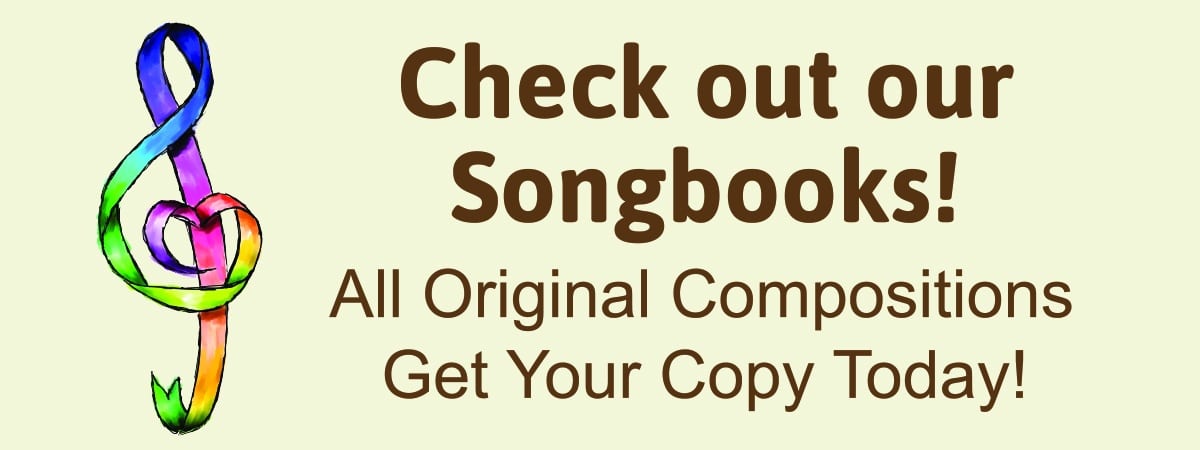Maybe it is because I have either been in school or worked in school settings for most of my life that I think of fall, and especially September, as the real beginning of the New Year. Here where I live, the air becomes crisp and the leaves fall from the trees making room for a particular brightness and clarity in the sky.
It’s also the time when my early childhood music groups fill up quickly.
Parents and toddlers come into the music room with wide, expectant eyes and a fresh blush of hope on their faces. What do they hope for? What do they expect? What do they want from me? What do I want for them? I sometimes think of these multi-faceted people as multicolored leaves that are swirling down from the trees, waiting for me to sweep them into a huge pile. Rushing into the room, they scatter into their own corner and claim their piece of ground. Sometimes a wind of recognition will blow and several of the grownups will begin to chat or the children plop themselves next to the same instrument. But I know that the parents have come here for more than just a drifting conversation or a chance for their child to play with toys. I believe they have come to find community; to have a place where they and their child can belong. So I pull out my virtual rake and begin to collect us all.
Fortunately the unique quality of the musical experience that I use as my tool promotes cohesion and inclusion.
So to begin my sessions I always start with sweeping everyone into the group experience through rhythmic and movement synchrony. I call this ‘gathering’. The value of rhythm and movement synchrony for gathering has been part of social traditions for generations and is also supported through practice and research. Music therapy pioneer and researcher Dr. Michael Thaut gave us solid neurological backing for the importance of rhythm in organizing and motivating people. An observation of music participation in parades or church services or even late night dances gives us practical evidence that rhythm gets people to get together.
But to me, gathering is more than just being together through mutual movement or action.
Gathering is just as much about wanting to be a part of the group; of wanting to belong. Gathering is about being willing to adjust your own actions to match that of another person and through that matching to become one with the group. The songs I use for gathering have a strong rhythmic component with clear organization through meter. The structure is predictable so that everyone can be comfortable and sure of how to join in. I don’t expect the grownups or children to perform. I just invite them to open themselves to be swept into the group music making by participating in their own way. Maybe it is tapping a toe, or clapping hands. Maybe it is just being still and absorbing the sounds.
I love to watch the transformation from ‘scattered individuals’ to ‘group members’ occur within these gathering songs.
What I didn’t fully appreciate was the amount of tiny but significant shifts that were happening to each grownup and child during that transformation. Recently I read two research articles about how individual players in an orchestra become one within the music. The authors used much fancier words than I generally use, but I think we share the same sense of wonder at the process of group building:
“To the extent that mutual temporal assimilation assists multiple individuals to act as one, it may thus strengthen interpersonal affiliation and group cohesion. Temporal assimilation may thus have benefits that extend beyond basic temporal coordination into the social sphere.” Pp. 18.
Nowicki, L., Prinz, W., Grosjean, M., Repp, B. H., & Keller, P. E. (2013). Mutual adaptive timing in interpersonal action coordination.
Psychomusicology: Music, Mind, And Brain, 23(1), 6-20.
“While the exact mechanism remains clouded, the clear effect of interpersonal synchrony on affiliation extends similar well-documented effects in mimicry by incorporating the crucial aspect of time.” Pp. 958
Hove, M. J., & Risen, J. L. (2009). It’s all in the timing: Interpersonal synchrony increases affiliation.
Social Cognition, 27, 949–961.
“Interpersonal affiliation and group cohesion”…that is what it means to belong to a group and “mutual temporal assimilation” or synchrony is one way to get there.
Or as I call it – gathering.
Some of the key qualities in facilitating music for ‘gathering’ in early childhood music groups:
- Music is more powerful than words for ‘gathering’. Start making music and leave the talking behind.
- Synchrony allows for individual types of responses within the rhythm. Rigidity or mimicry is not necessary for responses to be synchronous.
- Musical structure gives group members a framework so they can anticipate and organize their responses. The structure can be a song or improvisation.
- Natural adjustments to the imperfections of rhythmic responses contribute to the feeling of affiliation or belonging.
Enjoy the opportunity to gather this fall,
Beth
P.S. ‘Come Gather Together’ is adapted from the old hymn ‘We Gather Together’ and I use it frequently in my groups. You can find it in You and Me Makes…We: A Growing Together Songbook.


